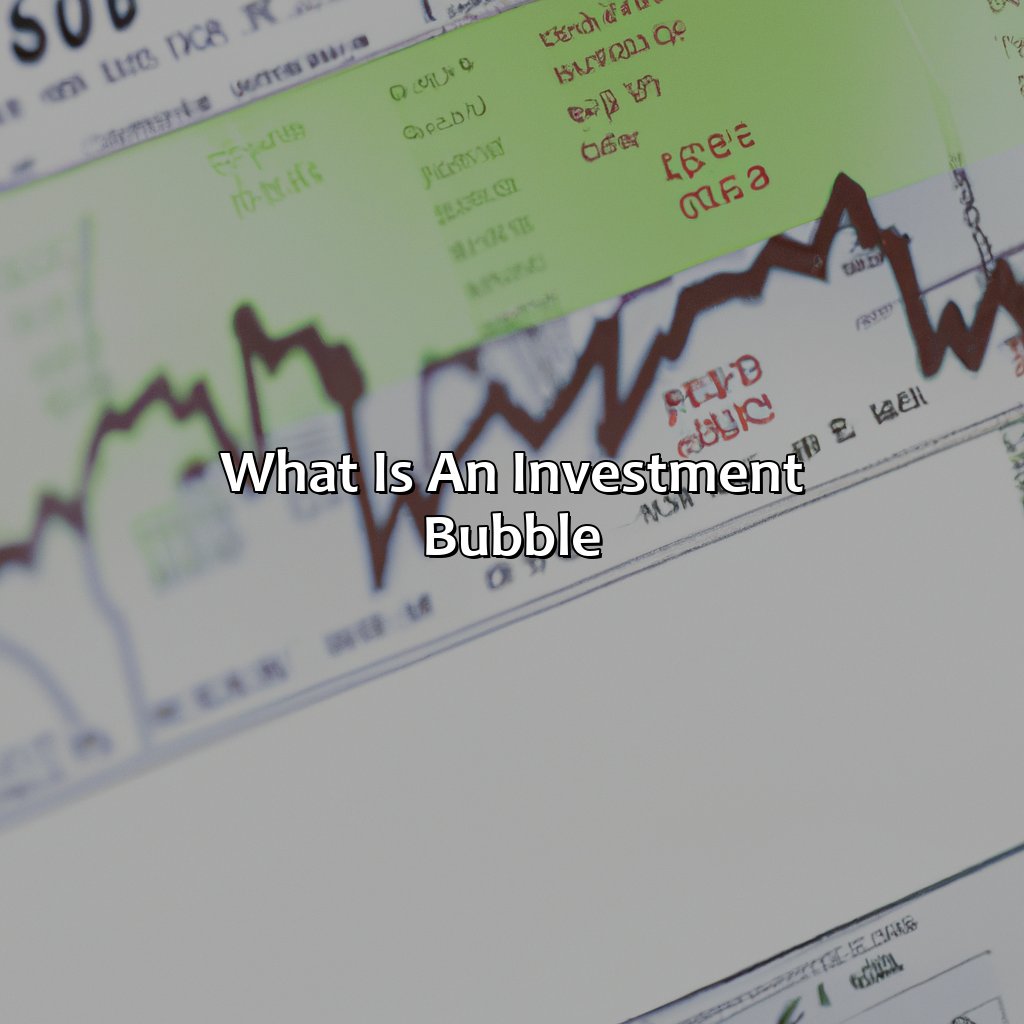What Is An Investment Bubble?
Key Takeaway:
- Investment bubbles refer to a situation where the prices of assets rise rapidly, far beyond their intrinsic values, creating an unsustainable market that eventually collapses.
- Investment bubbles are characterized by excessive optimism, high trading volumes, and a disregard for fundamental factors like earnings and asset values.
- Investment bubbles are often caused by factors like cheap credit, herd behavior, and speculation, among others.
- Investment bubbles have both positive and negative effects, such as increased wealth, job creation, and innovation, as well as economic instability, loss of investor confidence, and financial crises.
- To avoid investment bubbles, investors should diversify their portfolio, have a sound understanding of the market and its trends, and avoid getting caught up in hype and emotions.
You want to be savvy with your finances but don’t know where to start? Knowing about investment bubbles can be a great first step! Investment bubbles can have devastating effects on your finances, so it’s important to be informed. Read on to find out more about what an investment bubble is and how to spot one.
What is an investment bubble?
Want to know about investment bubbles? This section’s got you covered! It’s called ‘What is an Investment Bubble?’ and it’ll give you the answers. There’s a sub-section for every bit of info:
- ‘Definition of an Investment Bubble’,
- ‘Characteristics of an Investment Bubble’, and
- ‘Causes of an Investment Bubble.’
Get your knowledge on!
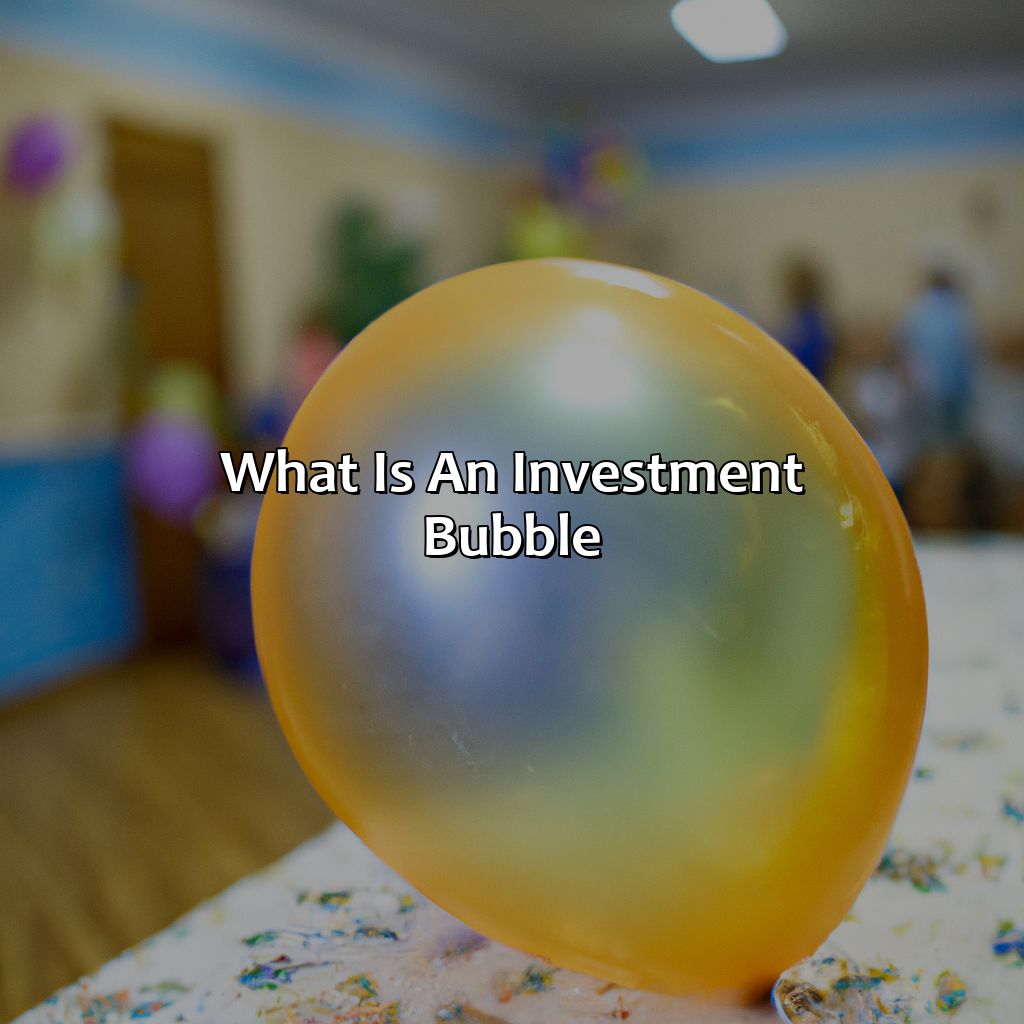
Image credits: retiregenz.com by James Arnold
Definition of an investment bubble
Investment bubbles are market situations where asset prices inflate rapidly, creating a high level of demand, leading to substantially increasing premiums. The price surge is not based on the usual factors that determine the value of assets like earnings growth or potential return on investment. Instead, speculators pile-up in the market because they want to cash in on the quick profits that they believe are available.
This unstoppable trend drives the buying price of these assets up until its valuation is far beyond what anyone would consider reasonable. However, when buyers realize that it’s impossible to achieve an ROI or sustained growth from the overpriced asset, they begin selling off their holdings simultaneously.
This panic-fueled sell-off causes immediate devaluation of this unrealistic priced asset and triggers a chain reaction driven by fear among buyers leading to a rapid free-fall of prices for several other related assets in the market. One example of such an Investment Bubble was during Dotcom Burst in 2000 when many tech firms were valued at astronomical amounts, but burst within days, leaving many investors with massive losses.
An investment bubble is like a grown-up version of a balloon animal that can burst at any moment, leaving you with nothing but disappointment and regret.
Characteristics of an investment bubble
An investment bubble is characterized by a rapid increase in asset prices, followed by a sudden and sharp decrease. This phenomenon is caused by investor speculation rather than underlying economic fundamentals.
During an investment bubble, asset prices rise beyond their intrinsic value due to excessive buying pressure from optimistic speculators. As more individuals invest, demand increases, prompting even more investors to purchase assets. Eventually, the market reaches its saturation point, and prices suddenly tumble as investors scramble to sell their holdings.
In an investment bubble, those who cash out early often walk away with significant profits while latecomers suffer significant losses.
One unique feature of investment bubbles is their ability to produce widespread economic crises that (in some cases) can impact global markets. Price increases attract an influx of inexperienced investors who are attracted initially to the potential for quick gains but are unprepared for the risks involved.
Investment bubbles have happened before in history repeatedly, such as The Dotcom Bubble of the late 90s or the Housing Bubble of 2008. Both scenarios were characterized by their own unique twists and turns—from skyrocketing prices to bankruptcies—the impacts were significant for those affected.
They say history repeats itself, but in the case of investment bubbles, it just keeps inflating until it pops.
Causes of an investment bubble
Investment bubbles are created due to a variety of factors such as herd mentality, psychological biases, and market optimism. The demand for a particular asset class may exceed its intrinsic value, leading to rising prices and overvaluation. As more investors pour in money, the price continues to rise until it reaches an unsustainable level, resulting in a sudden crash when the bubble bursts. Such bubbles can be fueled by various factors like easy money policies or even media hype.
Investors tend to get carried away with bullish sentiments and ignore the underlying fundamentals of the asset classes they invest in during these phases. Investors should follow fundamental analysis techniques while investing rather than blindly following the trend to avoid getting caught in investment bubbles that pose high risks.
Asset classes that were previously not popular or had low valuations may become speculative investments during such periods. It is essential not to overlook traditional wisdom and adhere to core investment principles when making informed decisions.
A study by Morgan Stanley revealed that investment bubbles happen once every 13 years on average, proving how vital it is for investors to educate themselves on recognizing an asset’s true intrinsic value before investing.
Warning: Investing in a bubble can be like blowing up a balloon – it may feel great for a while, but eventually, it’s going to pop.
Examples of investment bubble
Investment bubbles have happened in the past. Explore these examples further. Look into the Dotcom bubble, the Housing bubble, and the Cryptocurrency bubble.
Learn the stories behind each. Comprehend the effects they had.
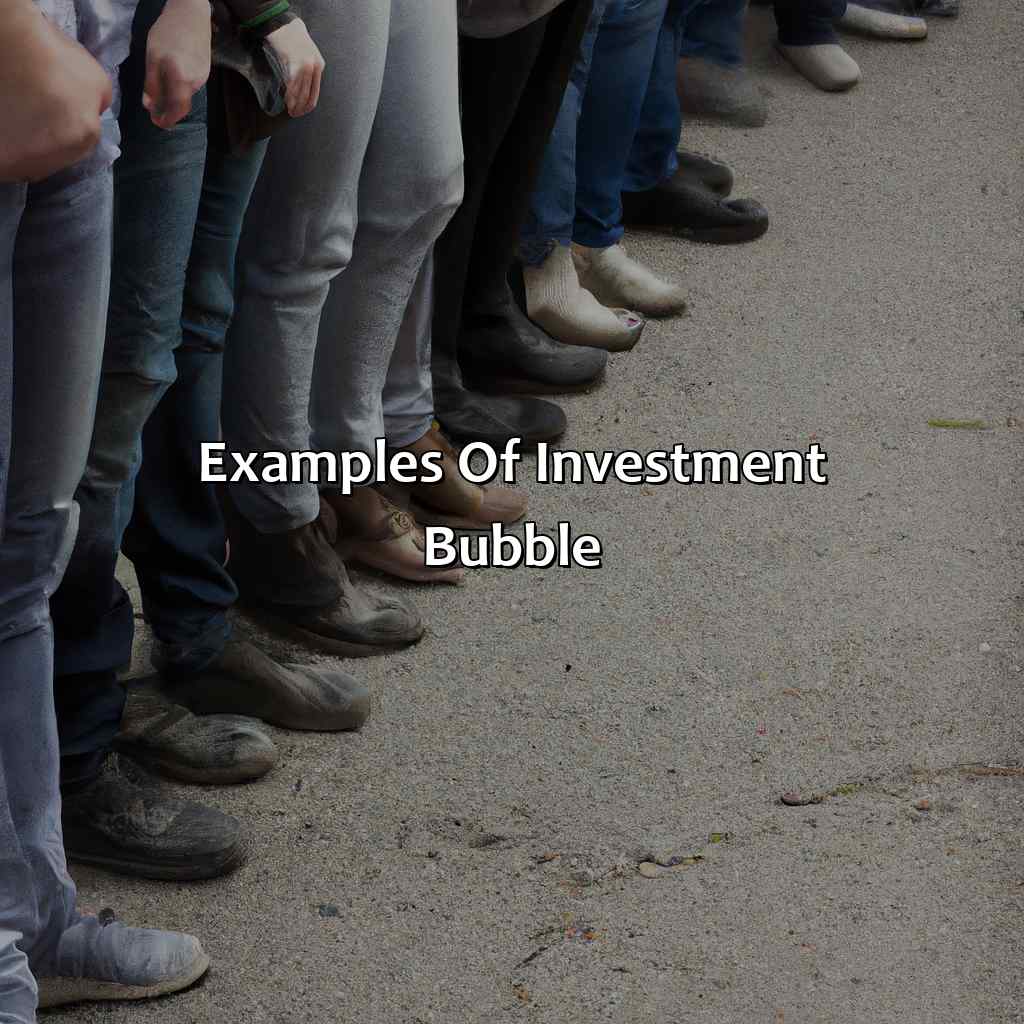
Image credits: retiregenz.com by David Woodhock
Dotcom bubble
During the turn of the millennium, there was a period of rapid growth in the internet technology sector. This led to a phenomenon now known as the Digital Technology Investment Bubble. The market experience a rise in stock prices for companies involved in the creation and operation of web-based businesses. Despite their lack of sales and profits, investors invested heavily causing companies like Pets.com and Webvan to fail after millions were poured into them.
This bubble occurred due to a bullish trend that emerged towards online-based businesses. Investors assumed that all these investments would eventually provide massive returns on investment, despite not being grounded in reality.
Investors emboldened with optimism ignored standard measures used in evaluating company performance creating an unwarranted sense of mad euphoria around this sector till it burst resulting in colossal losses in investments.
It is essential to learn from past mistakes by understanding how bubbles work and what warning signs to look for; otherwise, we may be doomed to repeat history at our own peril again. The housing bubble burst like a piñata, only instead of candy, it was full of foreclosures and financial ruin.
Housing bubble
In recent years, the real estate market has witnessed an extravagant financial phenomenon where the prices of properties are continually increasing beyond their fundamental values. This economic bubble has been referred to as a Real Estate Bubble or Property Bubble, and it is characterized by high demand for accommodations, often driven by speculation, and thus resulting in overpriced properties. This financial situation leads to homeowners holding large mortgages while the property value tanks in sync with deflated demand conditions.
The consequences reveal themselves when property values come crashing down rather than maintaining their upward growth trajectory. Consider the 2008 subprime mortgage crisis in the US as an example of this bubble bursting, which witnessed a dramatic decrease in housing prices from their peak levels. A similar but smaller-scale housing bubble was seen during the 1980s Japan recession.
Despite several government regulations aimed at controlling property bubbles, they repeatedly crop up across different geographies. The critical takeaway is that buyers must exercise caution before making any real estate investment decisions based solely on positive projections and without verifying information sources’ validity and quality.
Looks like the only thing more volatile than Bitcoin is my ex-girlfriend’s mood swings.
Cryptocurrency bubble
The sudden rise in the value of a particular type of digital currency, resulting in an unrealistic and unsustainable market growth, is often referred to as a digital currency frenzy. A significant increase in demand and price results from inflated hype, media attention, and rumors of future potential. The cryptocurrency bubble is a phenomenon that has been witnessed on various occasions in recent times. In past instances such as Bitcoin or Ethereum, the value has skyrocketed within months and then experienced a massive crash due to overhype, investor greed, and poor market decisions. It’s imperative to conduct extensive research before investing in such cryptocurrencies and to consider long-term stability rather than short-term gains. Only invest what you can afford to lose as the market is highly volatile.
An investment bubble is like a glitter bomb – it looks pretty at first, but soon becomes a mess you can’t clean up.
The impact of an investment bubble
To fathom the effects of an investment bubble, you must look into how it influences the economy, investors, businesses, and lastly, the general public. Positive effects may appear first, but then negative repercussions might arise and have long-term effects. This text will dive deeper into the distinct effects of the investment bubble.
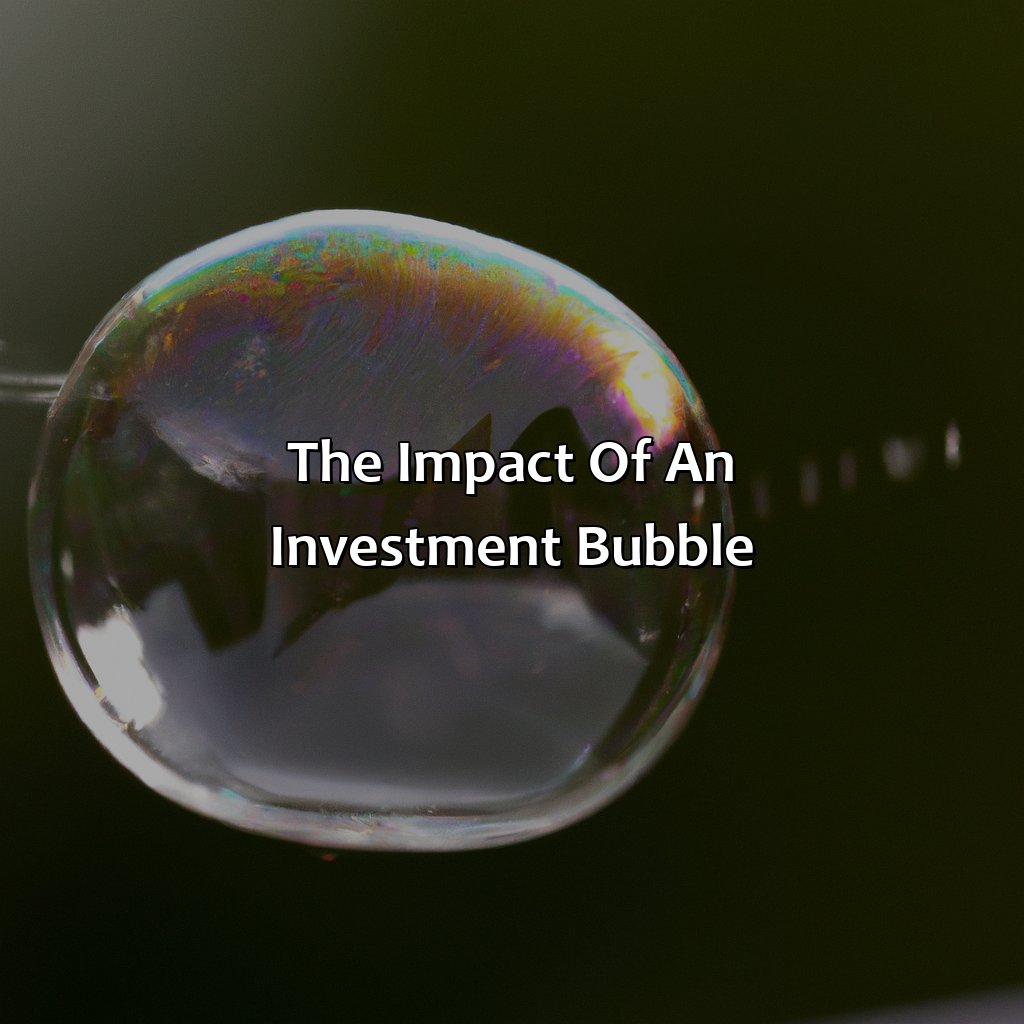
Image credits: retiregenz.com by Joel Arnold
Positive effects
Investment bubbles can have favorable outcomes that are worth considering. Here are some key takeaways regarding the profitable effects of investment bubbles:
- One significant positive effect is wealth creation, as asset values skyrocket and investors make money from buying and selling at higher prices.
- Another advantage is the stimulation of innovation and growth, as excess capital prompts entrepreneurial ventures that would not happen otherwise.
- Furthermore, speculative markets incentivize investment in areas outside of traditional infrastructure, technology and real estate.
- An investment bubble can also result in increased public awareness of investing and economic activities, thus leading to greater financial literacy.
It’s essential to note that while there may be some short-term benefits resulting from investment bubbles, the long-term impacts on the economy or individual investors may not balance out positively. A boom turned into a bust could lead to significant losses.
During the Dutch tulip mania in the 17th century, tulip bulbs were so highly valued that they became a form of currency. People mortgaged their homes and sold their belongings to purchase bulbs; however, when these prices abruptly plummeted, people were left with nothing but financial ruin. This history underscores how a usual market frenzy can snowball into an economic crash if allowed to go unchecked.
Looks like the investment bubble burst, leaving investors feeling more deflated than a punctured balloon animal.
Negative effects
The Detrimental Impacts of Investment Bubbles
Investment bubbles are marked by rapid price increases in a particular asset or security, followed by an eventual price collapse. These price distortions have significant negative implications that extend beyond market crashes and loss of investor confidence.
The impact of an investment bubble spreads beyond just the immediate financial aftermath. The collapsing asset prices can lead to economic downturns, which results in lost jobs and lower GDP. Additionally, investment bubbles cause investors to lose faith in the reliability of markets, leading to decreased future investment and slower economic growth.
Moreover, psychological effects such as fear and greed drive investors during an investment bubble. This leads to reckless decision-making, as they are not factoring in underlying market fundamentals but instead focusing solely on quick gains. As a result, companies may overvalue their assets, leading to excessive investments that result in financial distress later on.
In order to mitigate the negative effects of investment bubbles, governments must remain vigilant by implementing strict regulations on trading activities. Additionally, consumers must educate themselves about market trends and avoid falling for emotional traps such as FOMO (fear of missing out). Keeping a diversified portfolio that includes both stocks and bonds can also help safeguard against potential losses during market crashes.
While it’s impossible to predict when an investment bubble will occur, being aware of the risks associated with them and understanding how they have affected markets historically can go a long way towards minimizing their harmful impacts.
Remember, when it comes to investing, FOMO (fear of missing out) is just a fancy way of saying ‘I have no idea what I’m doing’.
How to avoid investment bubble
Stop yourself from entering an investment bubble! Diversify your investments. Study the market. Monitor trends. This way, you’ll stay safe from a bubble’s dangers.
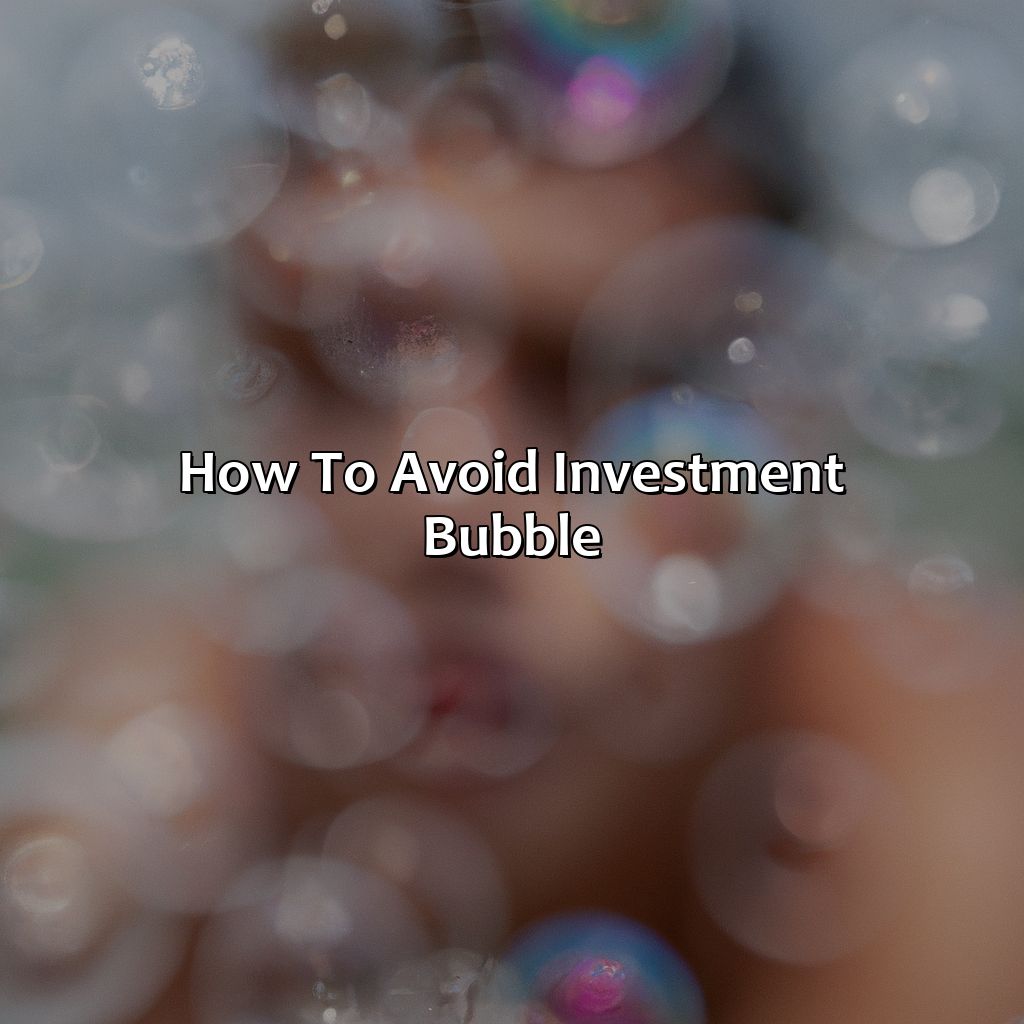
Image credits: retiregenz.com by Adam Jones
Diversify your investment portfolio
Investing wisely involves diversifying your investment portfolio. This means spreading your investments across various types of assets, sectors, and industries. By doing so, you mitigate the risk of losing all your assets in one sector due to market fluctuations or volatility.
A well-diversified portfolio should include a mix of stocks, bonds, real estate, and commodities. You can also diversify within each asset class by investing in different sectors and industries such as healthcare, technology, and consumer goods.
Investors should consider their risk tolerance and investment goals while diversifying their portfolios. Conservative investors may allocate more money towards stable investments like bonds or fixed-income securities while aggressive investors may opt for high-risk-high-reward stocks.
Additionally, investors should regularly rebalance their portfolios by reviewing the performance of each asset class and making necessary adjustments. Rebalancing helps to maintain the intended asset allocation and ensures that the portfolio stays diversified.
In summary, diversifying your investment portfolio minimizes risk and increases opportunities for returns. Consistent monitoring allows for proper maintenance of your investment mix to ensure sustained growth over time.
Research may not guarantee success, but it’s a great excuse for procrastination.
Do your research
Prioritizing thorough information gathering can aid in avoiding potential investment bubbles. Gathering data on market trends, evaluating historical pricing patterns, and assessing the potential impact of disruptive technologies are just a few factors that should be considered before making strategic investments. This research also entails keeping abreast of emerging industries and shifting consumer behaviors. Failure to conduct comprehensive research could result in investing in an inflated asset, leading to potentially detrimental financial consequences.
Additionally, conducting due diligence and seeking out reputable sources for investment advice can help mitigate risk-taking behavior. It’s important to recognize that while past performance may not dictate future results, comprehensive analysis can provide a more informed view of the market climate.
According to a report by CB Insights, “Between 2010-2013, there were 45 IPOs with valuations over $1 billion globally; they jumped to 136 between 2014-2017.” Such escalating trends affirm the necessity for proper research and insight-driven decision-making when maneuvering unpredictable markets.
Remember, jumping on a bandwagon may be fun, but it’s not always profitable – just ask anyone who invested in Beanie Babies.
Be aware of market trends
Being knowledgeable about the changing market dynamics is one of the top strategies essential for avoiding investment bubbles. Keeping in mind the real-time data reflecting supply and demand, fluctuations in prices can help avoid being caught up in an artificial boom created by market activity.
One way to accurately analyze such patterns is through statistical modeling tools and technical indicators, which allow investors to determine warning signals and make informed decisions about buying or selling. As financial markets are highly volatile and can be influenced by various factors, including geopolitical events, staying vigilant with your investments can prevent detrimental losses.
It is crucial to note that long-term investments tend to reduce effects of sudden bursts and take a more stable approach to building wealth over time. Be sure to diversify your portfolio with stocks from multiple industries, countries, or asset classes that mitigate risk while maximizing returns.
Pro Tip: Always keep abreast of news on significant indicators – GDP growth rates, unemployment figures – regularly featured on financial newspapers sites like Bloomberg or WSJ.
Five Facts About Investment Bubbles:
- ✅ An investment bubble is a rapid increase in asset prices fueled by speculation and hype rather than fundamentals. (Source: Investopedia)
- ✅ The first recorded investment bubble was ‘Tulip Mania’ in Holland in the 1630s, where tulip bulbs became a highly sought-after commodity causing their prices to skyrocket before collapsing suddenly. (Source: Smithsonian Magazine)
- ✅ The most infamous investment bubble in recent history was the ‘Dot-Com Bubble’ of the late 1990s and early 2000s, where internet-based companies experienced unprecedented growth and valuations before crashing spectacularly. (Source: The Balance)
- ✅ Real estate bubbles are a common type of investment bubble, seen most notably in the United States during the 2008 financial crisis when an overheated housing market suddenly collapsed. (Source: Investopedia)
- ✅ Investment bubbles can have severe economic and financial consequences, impacting not only investors but also the wider economy and society as a whole. (Source: IMF)
FAQs about What Is An Investment Bubble?
What is an investment bubble?
An investment bubble is a situation in which market prices of certain assets rise to levels that exceed their fundamental value. This creates a situation where investors become overly optimistic and start buying assets at inflated prices, leading to speculation and a further increase in prices. Eventually, the bubble collapses, causing a sharp decline in asset prices and substantial losses for investors.
What are the main causes of an investment bubble?
The main causes of an investment bubble are usually tied to market sentiment and the behavior of investors. When investors become overly optimistic and start rushing to buy certain assets, prices can quickly rise beyond their fundamental value. This is often fueled by things like media hype, low interest rates, and speculation.
How can you identify an investment bubble?
Identifying an investment bubble can be tricky, as it is hard to predict when prices will start to decline. However, some signs that a bubble may be forming include rapidly rising prices, high levels of market speculation, and asset valuations that are significantly higher than their fundamental value. Paying attention to these indicators can help investors to avoid the worst effects of a bubble.
What are some famous examples of investment bubbles?
Some of the most famous examples of investment bubbles include the 17th century Tulip Mania in the Netherlands, the dot-com bubble of the late 1990s, and the US housing market bubble that led to the Great Recession of 2008. In each case, investors became overly optimistic about certain assets, leading to sharp increases in their prices that were not sustainable.
What are the risks of investing in a bubble?
Investing in a bubble carries significant risks, as there is a high likelihood that prices will eventually fall, leading to substantial losses for investors. Additionally, investing in a bubble can lead to overconfidence and a complacent approach to investing, which can cause problems when the bubble eventually bursts.
How can you protect yourself from investment bubbles?
To protect yourself from investment bubbles, it’s important to understand the fundamental value of the assets you are investing in and to avoid being swept up in market hype and speculation. Additionally, diversifying your investments across a range of assets and sectors can help to mitigate the risks of a bubble. Finally, paying attention to market indicators and being prepared to sell your assets if necessary can help to minimize losses.
